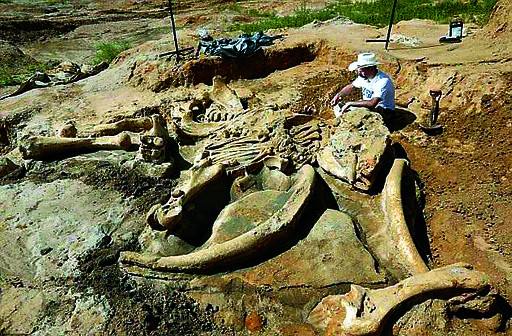Free Fire: Becoming the Hottest Tactical Competition Game in the US After Its Success in Southeast Asia and Latin America
Launched 3 years ago, "Pokemon Go" is still going strong!
Free Fire Shows Strong Momentum, with Its Revenue Overtaking PUBG Mobile in a Single Market for Q1 2021
Slay the Spire: Deck-Building Mastery Unleashed
How Much do you Know About the Game Minecraft?
Supercell‘s sixth mobile game "Rush Wars" is now in beta
At an airport construction site in the northern Mexico City, people found two hundred ancient mammoth bones. It is the largest fossil remains of mammoth bones ever found.
Last November, when the construction site was on a routine excavation, archaeologists from Mexico's National Institute of Anthropology and History were the first to realize that two sinkholes might contain a great number of mammoth fossilized bones.
 The sinkhole is in the town of Turtepec, which people originally intended to use as a dumping ground. Finally, people discovered at least 14 Columbian mammoths’ bones.
The sinkhole is in the town of Turtepec, which people originally intended to use as a dumping ground. Finally, people discovered at least 14 Columbian mammoths’ bones.
The construction site of Felipe Englers international airport is only 19.3 kilometres away from the ruins. Excavation team in found at least 60 mammoth bones in the dry bed of Lake Xaltocan in May. Since then, the total quantity has risen to more than 200, and more bones remain hidden underground.
Institute archaeologist Pedro Sanchez Nava told the ‘Associated Press’, “There’s more, at least hundreds of bones.”
Now there is one archaeological observer on each bulldozer to prevent anyone from excavating new fossils.
The previous largest mammoth remains were in Hot Springs, South Dakota, with the remains of about 60 fossils.
New discoveries may explain why mammoths became extinct.
Columbian mammoths came to North America about a million years ago. They were 4.3 meters high, and their lifespan is similar to that of humans: 70 to 80 years.
Different to Europe, north American mammoths may not have had much fur -- adapted to the warmer climate of North America. The distribution extends from Canada to Nicaragua and Honduras.
Columbian mammoths became extinct between 13000 and 10000 years ago, and many palaeontologists believe prehistoric humans overhunted them.

According to Mexican remains, mammoths may have been trapped in lakeshore mud and died of starvation or drowning. Humans could use the trapped mammoth there as a source of meat. But it is not clear whether the traps were deliberately created or not. Perhaps the mammoths were just unlucky enough to be lured by the lake’s grasses and reeds. However, according to Sanchez Nava, the large number of bones may also indicate that humans cleverly exploited the adhesion of the lakeshore.
If this is true, it would mean that ancient humans were able to kill more mammoths than previously imagination. It may also suggest that mammoths were a staple of the ancient diet, rather than a rare feast as researchers had previously assumed.
However, fossils found at the site have not shown any signs of human involvement in the slaughter.
Another popular theory is that the mammoth became extinct because of habitat loss due to warmer weather at the end of the ice Age. According to Joaquin Arroyo-Cabrales, a palaeontologist at the Institute of Anthropology, it may also be a combination of the two factors.